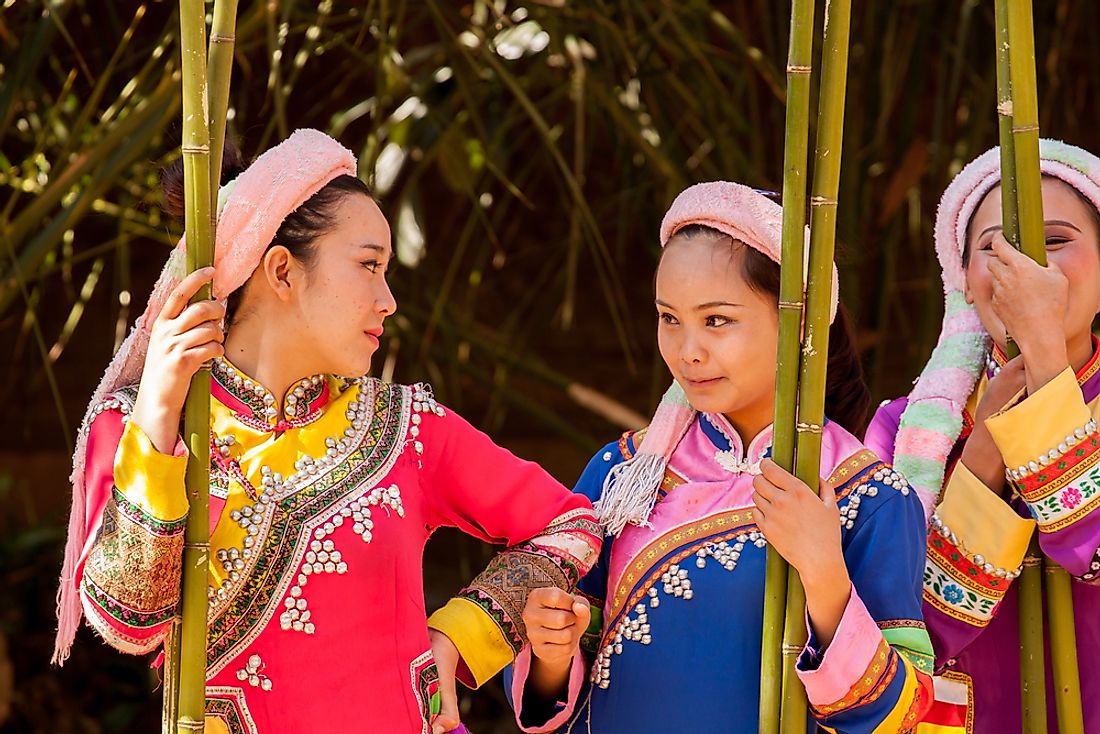The Largest Ethnic Groups In China

More than 9 in every ten residents of the Republic of China are Han Chinese. The ethnic group has a 91.59% of the overall Chinese population descent. The other 55 ethnic groups make up the minority consisting 8.41% of the total population as per the National Census of 2000. The ethnic groups harmoniously share the vast nation of China while leaving in the individual communities. The culture, festivals, and customs of the inhabitants of China are unique and serene.
The History of Ethnicity in China
The Han community for years portrayed prosperity and grew both in numbers and geographical boundaries. Within two millenniums, the ethnic group had absorbed many minority groups in China to become the dominant ethnic group. This sinicization reduced the many different states of China facilitating unity in imperial China. The Han inability to endorse and respect the different cultures and religion of other ethnic groups promoted the need for independence among the minorities conceptualizing a cultural divide. However, the imperial rule of the Han in their locality lands flourished until the communists took power in 1949.
Different ethnic group had a right to operate freely and independently of the federal government and can also disaffiliate. After years of influence, China finally gave into communalism. This change in governance saw the end of the sinofication of the non-Han Chinese people. The government of China also accepted, the Muslims in the region as Chinese and endorsed Islam as a religion constituting of many separate ethnic groups.
The Han Chinese, 91.6%
This ethnic group is the largest community not only in China but also in the whole world. With a population of about 1220.84 million, they live primarily in Yellow River, Pearl River, Yangtze River and Songliao Plain. The Han people majorly speak Mandarin and practice Taoism, Buddhism, and Confucianism.
Zhuang, 1.27%
The Zhuang community group is the second largest community in the country with a population of 16,926,381. The majority occupy the Guangxi Zhuang Autonomous Region and the province of Yunnan. They have their own language, but a majority speaks Chinese dialects. Their culture and way of life are similar to the Han, and this has facilitated respect and unity among them.
Hui Minority, 0.79%
This ethnic group practices the Islamic religion as they are descendants of the Turks but do not speak the dialect. Instead, they speak Mandarin Chinese just like the Uighurs.Today, they live in the Ningxia Hui Autonomous Region in the northwest of China, and the community is concentrated in Gansu, Hebei, Henan, Shandong, and Xinjiang provinces. The ethnic group shares customs and language with the Han people. They are approximately 10,586,087 people.
Manchu, 0.78%
The ethnic group has a population of about 10,387,958 concentrated in the provinces of Liaoning, Heilongjiang, and Jilin. The people practice Buddhism and believe in Shamanism.
Uyghur, 0.76%
With a population of about 10,069,346, the ethnic group is found primarily in the Xinjiang Uygur Autonomous Region and they practice Islam religion.
Interactions Between the Ethnic Groups
The government has introduced policies that facilitate the equity and unity between the ethnic groups. The systems also focus on promoting acceptance and tolerance of the different faiths and cultures practiced by the various communities. The introduction of regional autonomy by the government to enhance equity is the biggest stake in the minority group. The 55 communities have established townships and ran their affairs.
Despite these measures to promote peace and unity among and between the ethnic groups, the Tibetan people have continuously accused the government of China of marginalization. They claim that they are forced to reform and conform to the Chinese customs. China also accuses Beijing of the cultural genocides of the Tibetans and the recurring unsettling in the Tibet Autonomous Region
Largest Ethnic Groups In China
| Rank | Ethnic Group | Population | % of Overall Population |
|---|---|---|---|
| 1 | Han | 1,220,844,520 | 91.60 |
| 2 | Zhuang | 16,926,381 | 1.27 |
| 3 | Hui | 10,586,087 | 0.79 |
| 4 | Manchu | 10,387,958 | 0.78 |
| 5 | Uyghurs | 10,069,346 | 0.76 |
| 6 | Miao | 9,426,007 | 0.71 |
| 7 | Yi | 8,714,393 | 0.65 |
| 8 | Tujia | 8,353,912 | 0.63 |
| 9 | Tibetans | 6,282,187 | 0.47 |
| 10 | Mongols | 5,981,840 | 0.45 |
| 11 | Dong | 2,879,974 | 0.22 |
| 12 | Buyei | 2,870,034 | 0.22 |
| 13 | Yao | 2,796,003 | 0.21 |
| 14 | Bai | 1,933,510 | 0.15 |
| 15 | Korean | 1,830,929 | 0.14 |
| 16 | Hani | 1,660,932 | 0.12 |
| 17 | Li | 1,463,064 | 0.11 |
| 18 | Kazakh | 1,462,588 | 0.11 |
| 19 | Dai | 1,261,311 | 0.09 |
| 20 | She | 708,651 | 0.05 |
| 21 | Lisu | 702,839 | 0.05 |











